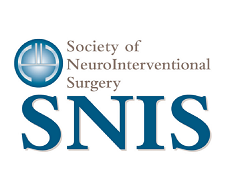 In an editor’s column published recently in the Journal of NeuroInterventional Surgery (JNIS), leading members of the Society of NeuroInterventional Surgery (SNIS) have argued that the entire body of research, including new evidence from two prospective clinical trials, “clearly confirms” that most patients with emergent large vessel occlusions (LVOs) will benefit from triage directly to comprehensive stroke centres (CSCs).
In an editor’s column published recently in the Journal of NeuroInterventional Surgery (JNIS), leading members of the Society of NeuroInterventional Surgery (SNIS) have argued that the entire body of research, including new evidence from two prospective clinical trials, “clearly confirms” that most patients with emergent large vessel occlusions (LVOs) will benefit from triage directly to comprehensive stroke centres (CSCs).
An SNIS press release details that JNIS editors are “urging hospital stakeholders to understand” that data from two recent, concurrent and seemingly negative trials—TRIAGE-STROKE and RACECAT—”actually both provide confirmatory evidence” that a direct triage programme is beneficial for patients in most geographies in the USA, and also worldwide.
Direct triage approaches, whereby patients with emergent LVOs are transported directly to CSCs to undergo interventional therapy, have been endorsed by the National Association of State Emergency Medical Services (EMS) Officials. Equivalents to CSCs in the USA are commonly referred to as thrombectomy-capable centres (TCCs) in Europe.
SNIS leaders state that, since the release of prospective data from TRIAGE-STROKE and RACECAT throughout 2023, “trade media and select hospital systems have issued messaging proclaiming, without qualification, that direct triage programmes are ineffective”. This has caused concerns about risks to patient care and outcomes in the neurointerventional community, the SNIS release adds.
“Misinterpreting both studies—which were stopped early—poses a grave risk to our patients in the USA, and much of the international community,” said David Fiorella (Stony Brook Cerebrovascular Center, Stony Brook, USA), lead author of the JNIS commentary and senior member of the SNIS. “We’ve begun to see the effects, with some primary stroke centres [PSCs] and hospital systems leveraging perceived financial incentives to interrupt lifesaving, direct-to-CSC triage policies.”
The JNIS commentary’s authors aver that RACECAT studied a “very large, diffusely populated, non-urban geography in Catalonia, Spain, where all TCCs are clustered in Barcelona”. They describe this system structure as “vastly different” to much of the USA. In addition, they argue, the majority of patients (56%) triaged directly to a TCC required more than 60 minutes of transport time, having “little relevance” to most of the US population, who live within one hour of a CSC. And, unlike USA-based EMS providers, the EMS providers in Catalonia “were not capable of administering treatment”, which “exacerbated the detrimental effects of prolonged transport times” to facilities located further away.
The authors of TRIAGE-STROKE reported data “overwhelmingly in favour” of direct triage to a CSC for emergent LVOs—but, “given its small study population, it failed to reach statistical significance”, the JNIS commentators continue. The data on intravenous lytic administration from the trial “also supported previous studies” demonstrating that excess transportation time being required to get to a CSC “does not diminish access to lytic therapy”. Finally, the authors note that TRIAGE-STROKE found evidence that the risk of dependence or death was higher for stroke patients triaged to a PSC first, rather than directly to a CSC, whether they had an emergent LVO or not.
“Globally, mechanical thrombectomy is not only considered effective for eligible patients, but firmly established as the standard of care for emergent LVO patients,” the SNIS’ recent release states. “However, the efficacy of such stroke therapies is largely dependent on time to treatment, and not all stroke centres are equipped to treat these patients—further emphasising the need for quick and appropriate protocols.”
“Much of the neurointerventional field is alarmed that these studies are being aggressively and inappropriately applied to interrupt or prevent direct transport programmes from being implemented,” added SNIS president Mahesh Jayaraman (Rhode Island Hospital, Providence, USA). “We must continue to apply triage and transport models that are proven to save lives. These are life and death decisions, and it is our duty as care providers to prioritise patient outcomes over additional profits.”
NeuroNews’ coverage of the aforementioned data from TRIAGE-STROKE and RACECAT can be seen here. Discussing their results with NeuroNews, leading authors on both studies agreed that—despite producing mixed signals regarding direct transfer protocols in acute ischaemic stroke—their findings highlight the need for further research in this space.












